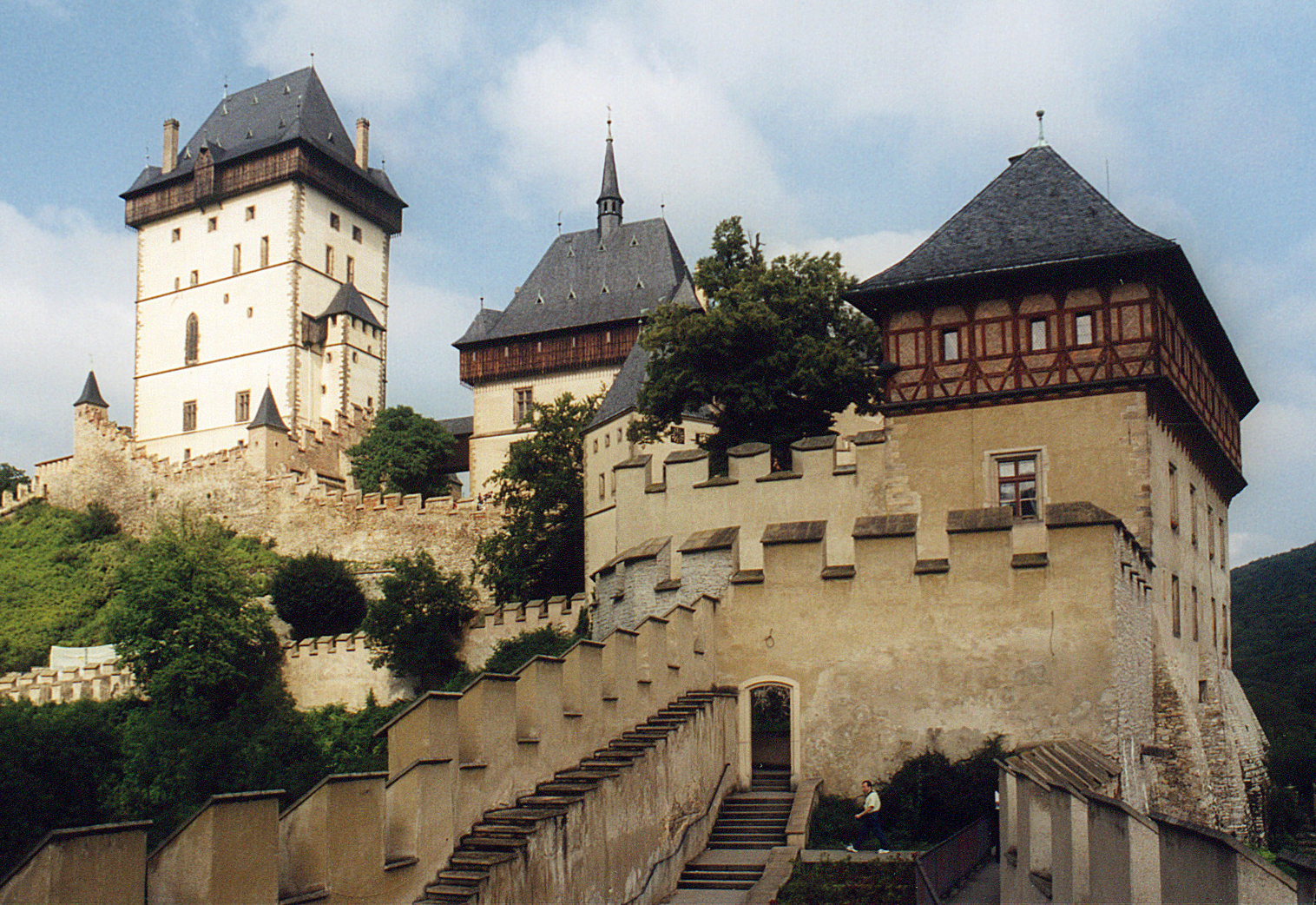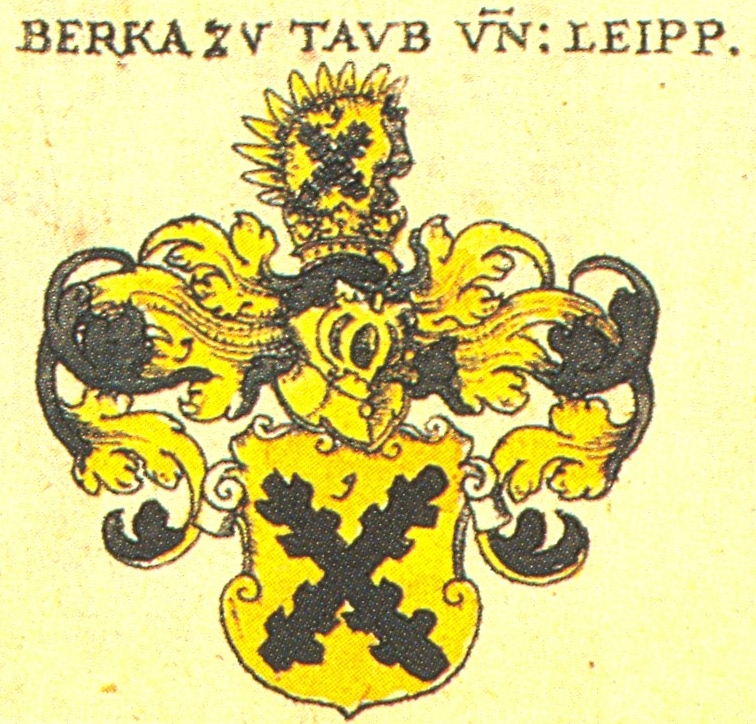|
Stránov
Stránov is castle in Jizerní Vtelno in the Central Bohemian Region of the Czech Republic. The original Middle Ages castle was reconstructed by Joseph Schulz to the neo-Renaissance look it has today. History In place of the present castle originally stood wooden fortress, which is recalled in 1429 by lord Bohuněk of Stránov. In its place Jaroš of Sovojovice built from 1463 to 1468 solid Gothic architecture, Gothic castle, which was named Nový Stránov. From 1545 to 1589 the castle was owned by the Berka of Dubá family. In 1589, Karel of Bieberstein, the Imperial Council and the highest mint master Kingdom of Bohemia, acquired the castle. Later the castle was getting new owner Michael Slavata from Chlum. During the role of family Bieberstein or Slavata castle was rebuilt in the Renaissance style. Around 1642, the owner became Jan of Lisov (a member of the Brandenburg nobility, he was promoted to the nobility for bravery in the Battle of Nördlingen and later to imperial com ... [...More Info...] [...Related Items...] OR: [Wikipedia] [Google] [Baidu] |
Jizerní Vtelno
Jizerní Vtelno is a municipality and village in Mladá Boleslav District in the Central Bohemian Region of the Czech Republic. It has about 400 inhabitants. Etymology The name Vtelno is derived from ''vetla'', an old Slavic word for willow. Geography Jizerní Vtelno is located about southwest of Mladá Boleslav and northeast of Prague. It lies in the Jizera Table. The municipality is situated on the right bank of the Jizera (river), Jizera River, which forms the eastern municipal border. History The first written mention of Jizerní Vtelno is from 1229. It belonged to the Stránov estate that was controlled from the castle adjacent to the village. Among the most notable owners of the estate were the Berka of Dubá family, the Bieberstein family, and the Slavata of Chlum family, who had the local castle rebuilt in the first half of the 17th century. Demographics Transport The I/16 road, which connects the D10 motorway (Czech Republic), D10 motorway with Mělník, passes throu ... [...More Info...] [...Related Items...] OR: [Wikipedia] [Google] [Baidu] |
Cheb
Cheb (; german: Eger) is a town in the Karlovy Vary Region of the Czech Republic. It has about 30,000 inhabitants. It lies on the river Ohře. Before the 1945 Expulsion of Germans from Czechoslovakia, expulsion of the German-speaking population, the town was the centre of the German-speaking region known as Egerland, part of the Northern Austro-Bavarian dialect area. The town centre is well preserved and is protected by law as an Cultural monument (Czech Republic)#Monument reservations, urban monument reservation. Administrative parts Cheb is divided into the following parts: * Bříza * Cetnov * Cheb * Chvoječná * Dolní Dvory * Dřenice * Háje * Horní Dvory * Hradiště * Hrozňatov * Jindřichov * Klest * Loužek * Pelhřimov * Podhoří * Podhrad * Skalka * Střížov * Tršnice Name and etymology The name of the town was in 1061 recorded as ''Egire''; in 1179 it was known as ''Egra''; from 1322 as ''Eger'' and the surrounding territory as ''Regio Egere'' and ''Provin ... [...More Info...] [...Related Items...] OR: [Wikipedia] [Google] [Baidu] |
Renaissance Revival Architecture In The Czech Republic
The Renaissance ( , ) , from , with the same meanings. is a period in European history marking the transition from the Middle Ages to modernity and covering the 15th and 16th centuries, characterized by an effort to revive and surpass ideas and achievements of classical antiquity. It occurred after the Crisis of the Late Middle Ages and was associated with great social change. In addition to the standard periodization, proponents of a "long Renaissance" may put its beginning in the 14th century and its end in the 17th century. The traditional view focuses more on the early modern aspects of the Renaissance and argues that it was a break from the past, but many historians today focus more on its medieval aspects and argue that it was an extension of the Middle Ages. However, the beginnings of the period – the early Renaissance of the 15th century and the Italian Proto-Renaissance from around 1250 or 1300 – overlap considerably with the Late Middle Ages, conventionall ... [...More Info...] [...Related Items...] OR: [Wikipedia] [Google] [Baidu] |
Castles In The Czech Republic
This is a list of castles and chateaux in the Czech Republic, organized by regions. Central Bohemia (S) Hradec Králové (H) Karlovy Vary (K) Liberec (L) Moravia-Silesia (T) Olomouc (M) Pardubice (E) Plzeň (P) Prague (A) South Bohemia (C) South Moravia (B) Ústí nad Labem (U) Vysočina (J) Zlín (Z) See also * List of castles in Europe * List of castles External links Czech Republic - Manors, Castles, Historical TownsHrady.cz {{Châteaux Czech Republic Castles ... [...More Info...] [...Related Items...] OR: [Wikipedia] [Google] [Baidu] |
Castles In The Central Bohemian Region
A castle is a type of fortified structure built during the Middle Ages predominantly by the nobility or royalty and by military orders. Scholars debate the scope of the word ''castle'', but usually consider it to be the private fortified residence of a lord or noble. This is distinct from a palace, which is not fortified; from a fortress, which was not always a residence for royalty or nobility; from a ''pleasance'' which was a walled-in residence for nobility, but not adequately fortified; and from a fortified settlement, which was a public defence – though there are many similarities among these types of construction. Use of the term has varied over time and has also been applied to structures such as hill forts and 19th-20th century homes built to resemble castles. Over the approximately 900 years when genuine castles were built, they took on a great many forms with many different features, although some, such as curtain walls, arrowslits, and portcullises, were ... [...More Info...] [...Related Items...] OR: [Wikipedia] [Google] [Baidu] |
Children's Home
Residential child care communities or children's homes are a type of residential care, which refers to long-term care given to children who cannot stay in their birth family home. There are two different approaches towards residential care: The family model (using married couples who live with a certain number of children) and the shift care model. It is part of the foster care system and combine several aspects of ways and means to raise a child. A community (origin: Latin ''communis'', "shared in common") is a social unit of people who share e.g. norms, religion, values or identity. It is often tied to a specific geographic or virtual area. Residential child care communities operate on one or more than one campus, which connects the different units within the program. House parents/ social workers, therapists, caseworkers, teachers, management staff members as well as other staff members that contribute to the program of the specific organization cooperate to ensure a positive env ... [...More Info...] [...Related Items...] OR: [Wikipedia] [Google] [Baidu] |
Nationalized
Nationalization (nationalisation in British English) is the process of transforming privately-owned assets into public assets by bringing them under the public ownership of a national government or state. Nationalization usually refers to private assets or to assets owned by lower levels of government (such as municipalities) being transferred to the state. Nationalization contrasts with privatization and with demutualization. When previously nationalized assets are privatized and subsequently returned to public ownership at a later stage, they are said to have undergone renationalization. Industries often subject to nationalization include the commanding heights of the economy – telecommunications, electric power, fossil fuels, railways, airlines, iron ore, media, postal services, banks, and water – though, in many jurisdictions, many such entities have no history of private ownership. Nationalization may occur with or without financial compensation to the former owners. ... [...More Info...] [...Related Items...] OR: [Wikipedia] [Google] [Baidu] |
Tycho Brahe
Tycho Brahe ( ; born Tyge Ottesen Brahe; generally called Tycho (14 December 154624 October 1601) was a Danish astronomer, known for his comprehensive astronomical observations, generally considered to be the most accurate of his time. He was known during his lifetime as an astronomer, astrologer, and alchemist. He was the last major astronomer before the invention of the telescope. An heir to several noble families, Tycho was well-educated. He took an interest in astronomy and in the creation of more accurate instruments of measurement. He worked to combine what he saw as the geometrical benefits of Copernican heliocentrism with the philosophical benefits of the Ptolemaic system, and devised the Tychonic system, his own version of a model of the universe, with the Sun orbiting the Earth, and the planets as orbiting the Sun. In ''De nova stella'' (1573), he refuted the Aristotelian belief in an unchanging celestial realm. His measurements indicated that "new stars" (''stellae ... [...More Info...] [...Related Items...] OR: [Wikipedia] [Google] [Baidu] |
Gothic Architecture
Gothic architecture (or pointed architecture) is an architectural style that was prevalent in Europe from the late 12th to the 16th century, during the High and Late Middle Ages, surviving into the 17th and 18th centuries in some areas. It evolved from Romanesque architecture and was succeeded by Renaissance architecture. It originated in the Île-de-France and Picardy regions of northern France. The style at the time was sometimes known as ''opus Francigenum'' (lit. French work); the term ''Gothic'' was first applied contemptuously during the later Renaissance, by those ambitious to revive the architecture of classical antiquity. The defining design element of Gothic architecture is the pointed or ogival arch. The use of the pointed arch in turn led to the development of the pointed rib vault and flying buttresses, combined with elaborate tracery and stained glass windows. At the Abbey of Saint-Denis, near Paris, the choir was reconstructed between 1140 and 1144, draw ... [...More Info...] [...Related Items...] OR: [Wikipedia] [Google] [Baidu] |
Berka Of Dubá
Berka of Dubá ( cs, Berka z Dubé) was a cadet branch of a Bohemian noble family of Lords of Dubá established by Hynek Berka of Dubá (1249–1306). It held estates in what is today the Czech Republic and Saxony in Germany throughout the Middle Ages. Domanial Houska, Bělá pod Bezdězem, Bezděz, Lemberk, Dubá, Zákupy, Milštejn, Tolštejn, Kokořín, Kuřívody, Berštejn, Mühlberg (until the 15th century), Herrschaft Hohnstein (Saxony) – given in exchange for Mühlberg to the House of Wettin in 1443. End of line After the Battle of White Mountain on 8 November 1620, many of the members were expelled together with the King Frederick I and domanials were confiscated. One of the family members, loyal to the Emperor Ferdinand II, was created an Imperial Count in 1637. Line died off in the 18th century, some descendants of expellees after the Battle of White Mountain remained in Sweden and in Saxony during 18th and 19th centuries. Notable members *Zbyn ... [...More Info...] [...Related Items...] OR: [Wikipedia] [Google] [Baidu] |






.jpg)
